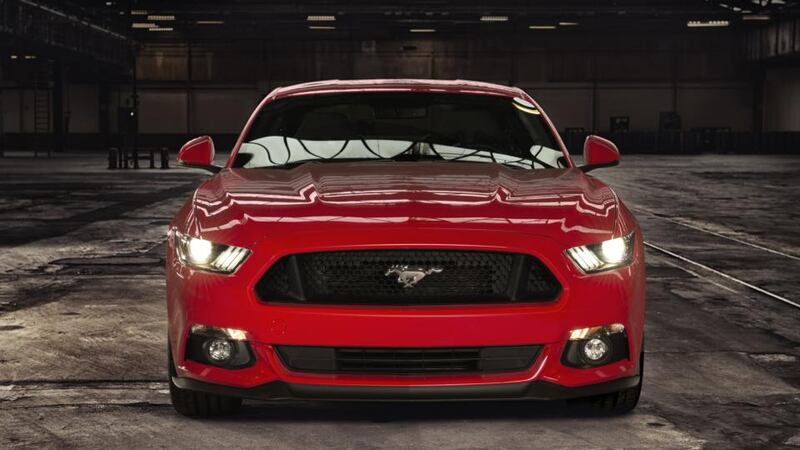Provisional sales figures for 152 registrations may offer some succour to a sector that suffered severely during the recession. Predictions are for sales to hit 120,000 by year’s end, the first time they have exceeded 100,000 since 2007.
As customers return to forecourts they are starting to notice that the landscape has changed. Not only is the dual numberplate system in place, but the brands have been overhauled as well. Newcomers like Dacia have secured significant market shares at the expense of former favourites. Dacia arrived here only in March 2013, but it already has a 3 per cent share, ahead of the likes of Peugeot and Seat.
The other big theme of the results is the continuing sales surge of Hyundai. Its rise has come at a price to other mainstream brands, particularly Ford. Part of the US firm’s problem is that its range does not reflect changing consumer tastes.

With a firm foothold in the family hatchback and saloon segments, it should, logically, have gone on to ride the wave of popularity for people carriers.
But Ford ignored the move towards SUVs, allowing Hyundai to establish itself in the mainstream market with its Santa Fe and IX models. Ford was then late to the mainstream move towards crossovers, where Nissan’s Qashqai has long been king. This has proved costly, as others were quicker to jump on the crossover bandwagon.
Kuga price tag
The Ford Kuga entered the market with a price tag that was higher than rivals’, even if in reality it was much closer to the amount most people spent after purchasing a rival and upgrading it. The Kuga’s price has gradually dropped, becoming more competitive, but the spotlight has moved on to other brands’ models, and the Kuga struggles to register on Irish buyer’s shopping lists. It’s a pity, for it’s a very good car.
Recognising that it was losing sales, Ford tried to plug the gap by adding its little Fiesta-based EcoSport crossover to the line-up in Europe, but neither the build quality nor the image was up to European rivals’, or even to those of other Ford models. Barely on the market for a year, it has received a major overhaul after poor reviews.
In the midst of this comes the launch of the new Ford Mustang, a halo model that’s certain to renew affection and attention for the brand. And it’s relatively well priced, starting at €46,000 for the 2.3-litre. Yet clearly it’s never going to be a volume player.
Alongside this comes the launch of Vignale, a well-executed premium upgrade to the already impressive Mondeo. Vignale is Ford’s new leather-clad, heavily equipped premium play. It’s not just a model but a state of mind, if you are to buy into the Ford hype. We will see Vignale versions of the Focus and probably even the Fiesta when the facelifted version arrives next year.
Vignale and Mustang have something in common, in that both will be sold through selected dealers in what are called Ford Stores. These will offer improved customer service and attention to detail, in keeping with the sort of service you might expect at the outlets of premium brands. Four such outlets are being introduced in Ireland: one in Cork, two in Dublin and one in the west.
Slice of the premium market
Car giants have three ways of getting a slice of the premium market: buy and revive an ailing brand, in the style of Tata’s work with Jaguar; create their own brand, and invest heavily in developing its reputation over two decades or so, in the way Toyota has done with Lexus; or dress up their current range with some premium baubles and hope to steal some share, in the form of Ford with Vignale or Citroën’s previous strategy for its DS range.
The French lessons are worth noting: Citroën has now opted to spin out the DS range rather than have it share the stage with its mainstream brand. It hopes to build on the DS heritage to create a Lexus-like standalone.
Ford can’t do that with Vignale, an unknown entity until now and one that will struggle to resonate with consumers in an already crowded market.
Most Audi or BMW buyers won’t be lured from the established brands – and the perceived social status they bring to a driveway – by a new sub- brand whose purchase requires explanation and even defence to friends and family. And that’s before we get to the fact that many will initially struggle to pronounce the name.
This month sees the introduction of the new C-Max range and the alluring ST versions of the Focus, including a tempting ST diesel estate. Along with the Mustang, these are worthwhile additions to the range, but they are hardly going to get Ford back to occupying more than 10 per cent of the market.
Crossover segment
It needs to focus on putting itself front and centre in the crossover segment and trying to be at the front of the next wave, not swimming along behind. These issues need to be addressed at head office in Detroit. In the meantime its operations in Ireland will have to fend off the concerted challenge from Korean brands while facing off against the financial clout of the Volkswagen group.
Admittedly, Ford still has an impressive 9.5 per cent market share, one that Renault, Peugeot and Fiat must look at with envy. But it’s a situation that needs to be addressed by the senior executives driving the brand from the US. For several years the word was out: the Koreans are coming. With the end of the recession it seems they’ve arrived.











